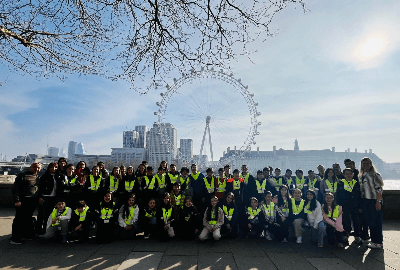BILFEN HIGH SCHOOLS GEOGRAPHY DEPARTMENT
Project Name: Impact of Paleogeographic Processes on the Future of Svalbard
Project Name: (IPFFS)
Project Duration: 06.02.2025-06.02.2026
Objectives: We aim to understand Svalbard's geological history and climate changes through fossil finds and rock analyses.
Fossil samples provide information about many subjects such as the ancient climates, geological history and ancient living environments of the regions where they are found; It creates very important data for the discovery of country resources such as minerals and oil. Svalbard is located in an area where fossils are commonly found due to its geological history. For this reason, we would like to organize a "Fossil Hunt" organization with our students so that they can research and discover fossils during our trip. We also plan to visit the fossil museum in the region (Svalbard Museum) and obtain information about the geological structure, climate changes and ancient living conditions of this region, along with the fossils that can be found, and share this information with our other friends.
Svalbard's paleogeographic processes; We plan to examine geological and climatic data on how the plate moves northward and transitions from the Mediterranean climate to the polar climate. In addition, we aim to investigate the possible effects of climate change on Svalbard's future ecosystem and environmental structures.
Data collection, sharing and method plan: Field investigation, museum visit, collection of fossil and rock samples
Environmental impact: Removal of fossil and small rock samples in the research area
Dissemination and communication of results: Publishing in scientific journals and sharing with the Norwegian Polar Institute (NPI)
Project web page URL ..?
Related projects: RiS ID 12198: Svalbard Warm Arctic Paleoclimate Laboratory – Providing High Arctic Paleoclimate time series through research collaboration
Svalbard's Paleocene–Eocene (66–33.9 million years BP) geological record is a globally unique deep-time palaeoclimate archive. This time period was a period of high atmospheric CO2 levels and a warm greenhouse climate and is the best available analogue for predicting near-future warming. This record holds a unique possibility for the development of a world-class field laboratory to establish long-term regional stable isotope records and investigate landscape and vegetation response, including ecosystem resilience to a warming high Arctic. The project team is an expansion and consolidation of the previous Svalbard Strategic Grant-funded initiative...
Svalbard's Paleocene–Eocene (66–33.9 million years BP) geological record is a globally unique deep-time palaeoclimate archive. This time period was a period of high atmospheric CO2 levels and a warm greenhouse climate and is the best available analogue for predicting near-future warming. This record holds a unique possibility for the development of a world-class field laboratory to establish long-term regional stable isotope records and investigate landscape and vegetation response, including ecosystem resilience to a warming high Arctic. The project team is an expansion and consolidation of the previous Svalbard Strategic Grant-funded initiative...
RiS ID 11316: Complex paleogeographic study on Svalbard (finished)
This project is a continuation of previous years' work on the paleoecological and paleogeographic history of Svalbard. This year we will expand our geomorphological research and improve previously collected data. The main areas of our research are: Grondalen, Gronfjorddalen, Aldegonda glacier, Congressess lake, Hollenderdalen, Kolsbay. Main research activities include geomorphological routes, sedimentary outcrop identification, sample collections and analytical studies in the chemical-analytical laboratory (diatom analysis,pollen analysis and optional geochemical analysis). The results of previous years' work are currently in progress,two articles are being prepared...
This project is a continuation of previous years' work on the paleoecological and paleogeographic history of Svalbard. This year we will expand our geomorphological research and improve previously collected data. The main areas of our research are: Grondalen, Gronfjorddalen, Aldegonda glacier, Congressess lake, Hollenderdalen, Kolsbay. Main research activities include geomorphological routes, sedimentary outcrop identification, sample collections and analytical studies in the chemical-analytical laboratory (diatom analysis,pollen analysis and optional geochemical analysis). The results of previous years' work are currently in progress,two articles are being prepared...
Key words: Paleogeography, plate tectonics, fossil, rock, climate change





